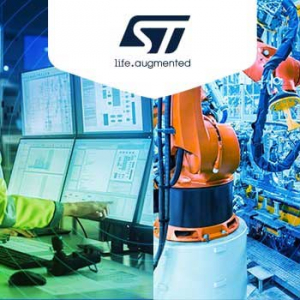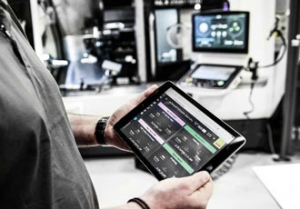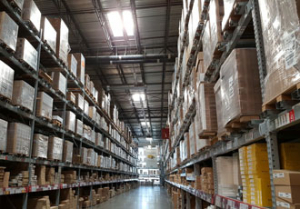What makes the Supply Chain of Tomorrow?

Supply chains have always been a key part of industry. However, following COVID-19, there has been increased speculation on how they can adapt to future scenarios. Over the last few years, there has been a distinct transformation which has altered how supply chains work and can be outlined by four key trends, including digitisation, sustainability, customisation and regionalisation.
By Mark Yeeles, Industrial Segment Director at Schneider Electric
As resilience continues to be a hot topic, it’s vital we understand how this will impact supply chains and how the combination of these key trends will change how supply chains operate, as new challenges come into play.
Customisation: A long journey
It is imperative that supply chains adapt to different types of customers. Customisation has become the new normal with tailored requests, speed, and local engagement becoming necessary. A 'one-size-fits-all' approach to supply chain is not suitable as it inhibits growth and broadly leads to overall dissatisfaction.
When embarking on our own journey, we have developed five Supply Chain models to reflect the expectations of our different customer segments, including integrators, electrical distributors and end-users.
Digitisation: Supporting the needs of customers
The key to building a customer centric supply chain is digitisation. All customers are searching for efficiency, productivity, and quality gains. Unless operating processes are connected, systems and tools cannot truly support the needs of customers or the business to provide one version of the truth.
Connectivity allows us to control, monitor, and optimise every part of the process. It creates the desired end-to-end view, which can be visualised at Unified Operating Centres located at key points around the world, to provide on-site, real time knowledge driven by data analytics. Such connectivity creates the ability to make better decisions and predict demand with customers, triggering a reaction along the links and activating frontline teams to address needs more efficiently.
Together, connectivity and artificial intelligence can eliminate downtime by continually running tests to improve performance, detect issues and create diagnosis before outages occur. This enables predictive analytics to provide real time information that supported up to date decision making, which in turn reduces the risk of unplanned down-time.
Thanks to digitisation, suppliers can be fully integrated into an 'extended supply chain', encouraging transparency and traceability. Digitisation becomes a foundation for circularity. It opens manufacturing to all shareholders and changes the relationship between suppliers and manufacturers.
Of course, the human component is key. Digitisation allows for agile management, augmenting and empowering field operators and enabling unmanned operations to ensure their safety. It breaks down silos and builds collaboration and trust.
At Schneider, we deploy our own technologies across our Global Supply Chain footprint of 300 Connected Factories and Distribution Centers, 100+ of which are 'SMART' Certified. We have a range of sites in Asia, China and Europe designated as World Economic Forum advanced manufacturing 'Lighthouses' that shed light on the benefits of Industry 4.0.
One example of these lighthouses is the Le Vaudreuil, a Schneider Electric motor control manufacturing plant in Normandy. Nominated as WEF’s model for the future, this factory draws on EcoStruxure technology and utilises a wide range of our digital tools.
This factory represents the future of manufacturing. Think about it. Inside the factory there are mini data centres storing critical site data, all USB keys pass through a decontamination terminal, and sensors monitor machinery to predict - as opposed to reacting to all factory maintenance needs.
What’s more - as a result of augmented reality, the factory is benefiting from a 7% increase in productivity, and energy savings of up to 30%. This factory not only showcases the benefits of embracing smart technologies but also the ease at which any business can begin its own digital journey.
Sustainability is not a new trend
Despite sustainability in supply chains becoming a large part of the headlines in recent years, it is not a new trend. Supply chains are major contributors to environmental impact and since the early 2000’s, many sustainable initiatives have been undertaken.
Our actions focus on three factors:
- Zero-carbon to reduce CO2 footprint, reducing emissions and helping organisations meet their sustainability targets.
- Circularity in both design and end-of-life processes to minimise resources.
- Conserving biodiversity through the optimisation of energy usage to maximise and hit sustainability commitments.
While the momentum was already underway, it will be accelerated going forward. The need for sustainability to address primary threats such as Climate Change has been reinforced by COVID-19 and will be a priority in recovery plans. Governments and businesses alike are focusing on a green future.
Implementing a multi-local and balanced footprint approach
Over the last twenty years, there has been an obvious shift in the supply chain footprint. In early 2000’s, the footprint was highly concentrated in mature markets. By mid-2000’s, to align with customer footprint and optimise costs, it shifted to an industrialised footprint with international production lines.
Today, the risks associated with long chains, along with growing trade tensions and geo-politics, are causing many organisations to again re-evaluate.
Over the past ten years, we have implemented a multi-local and balanced footprint approach, complemented by tight global coordination. For this to increase - we need to further build our local resilience through shorter supply chains, rooted in local communities. Our local operations can understand better, adapt quicker, reverse logistics, and repair locally. This is not a shift from globalisation, merely a new form - with global players connected in shorter chains.
None of the trends are independent from one another. Digitisation drives sustainability - it is critical for efficiency, circularity, and decarbonisation of energy. Sustainability is a driver for regionalisation - reducing mass transportation significantly reduces climate impacts. Regionalisation allows tailored supply chain solutions through flex centres bringing even more value to customers. As we see an increase in digitisation across supply chains, regionalisation will be facilitated.
COVID-19 Acting as a Catalyst
Many questions and rumours are beginning to circulate as to whether extent COVID-19 will change or accelerate these trends. Undoubtedly, the crisis was a supply chain crisis (caused by lockdowns, borders closing, country-by-country specifics). However, COVID-19 has not changed the fundamentals; rather it has acted as a catalyst that is forcing all organisations to rapidly adopt these trends. This builds resilience, and those who embrace it quickly will set themselves up for success.
A multi-local approach - A purely local footprint is not feasible - one disruption can bring down the whole chain. To overcome this, organisations need to regionalise, with a form of redundancy, and empower the local level, with a tight coordination of local sites. Of course, such reorganisation will impact costs. But it will be in both ways - increased CapEx for redundancy and relocation, and reduced costs due to decreased inventory and working capital from shortening the supply chains, as well as higher sustainability.
Resilience requires an end-to-end vision - It should be considered at the level of the interconnected partner ecosystem. It requires visibility and transparency from both Tier One and Tier Two suppliers all the way to customers. Business continuity plans need to reflect this end-to-end value chain.
A step change in efficiency can be achieved through integration across four axes - The integration of energy and automation to achieve both energy and process efficiency; the vertical integration of end-point to cloud, so all data from the shop floor upwards is visible; the lifecycle integration, capturing data from design and build, all the way to operation and maintenance, to eliminate the inefficiencies in the transition from CapEx to OpEx; and the integration of all sites and workshops into One Unified Operation Center for a big-picture view of energy and resource consumption, providing a 'one version of the truth' platform.
Technology is the answer - We need digitisation across every aspect of the chain. Automation can support event response and day-to-day operational management, predicting and mitigating risks to customer demand and shaping scenarios to delivery optimal efficiency and agility.
We must remember, the technologies to form a resilient, agile, and collaborative supply chain are already in play. The time to start building the future supply chain is now - by using technology and aligning it to the four key trends, supply chains will be able to adapt to upcoming scenarios.
Similar articles
More from Schneider Electric SA
- A green recovery powered by digital and electric 26th April 2021
- Industrial automation with EcoStruxure Automation Expert v21.0 17th February 2021
- Universal automation: a necessity for post-Brexit Britain? 11th December 2020
- What makes the Supply Chain of Tomorrow? 30th September 2020












Write a comment
No comments